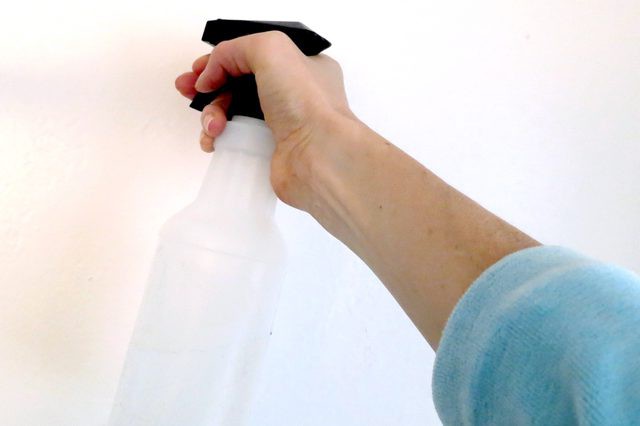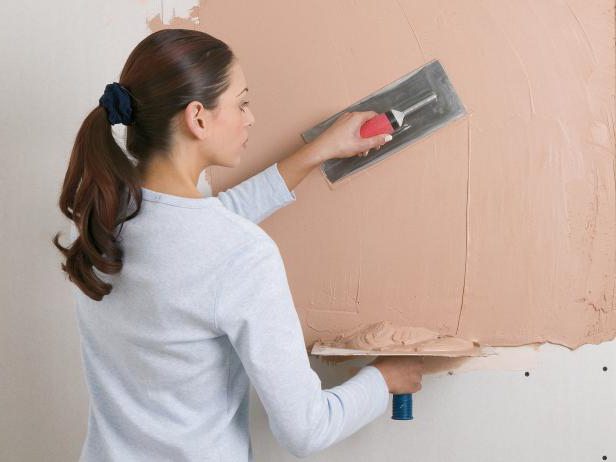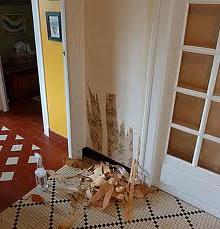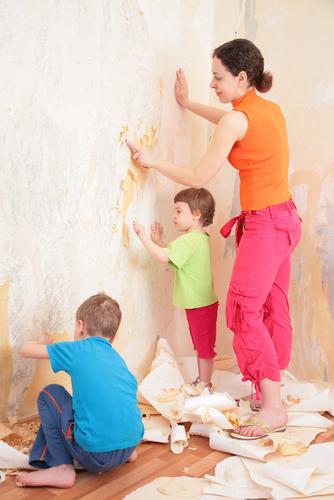Let's make repairs ourselves - preparing the walls for the wallpaper. Priming consumption for 1m2
In countries of Europe and America, a preliminarya surface primer began to be produced a few decades ago, but we have introduced this technology relatively recently. Therefore, some compatriots do not, no, and there will be a question about the advisability of priming. Having received a convincing answer to this question, they begin to puzzle over the second question - about what will be the consumption of the primer on 1m2 of the surface, how much it should be purchased and what is actually this material.
So, a primer is a special material that penetrates deeply into the base and fixes it, which makes further, final, construction works of the highest quality.
It is clear that a special primer has been developed for each type of surface. The most common for us is the primer, applied to a wooden or metal surface before painting it.
But similar compositions are also developed for concrete. They are applied to the concrete surface before laying the tiles, as well as before painting or wallpapering.
Also, there is a primer designed for surface treatment before applying putty and plaster.
In general, the composition of the primer is selectedso that its components and fillers allow to give the surface to be treated the necessary qualities - porosity or smoothness, stickiness or water repellent properties, etc.
From theory to practice. Do you know how to properly prepare the surface for wallpapering? Consider this process step by step on the most relevant example - the preparation of walls for wallpapering.
Removing old wallpaper and priming the surface of the walls. Priming consumption for 1m2
Initially, it is necessary to clean the walls of oldwallpaper. Usually they are well moistened - then the wallpaper is easier to move away from the surface of the wall or ceiling. Do not separate the area again, soak and scrape with a spatula.
Now it is necessary to primer the surface of the walls. It will be convenient to do this with a roller or spray gun (then the priming consumption for 1m2 will be significantly reduced). Sometimes, if the surface is too porous and the primer is absorbed instantly, it may be necessary to apply it another layer. Therefore, a primer for surface treatment under plaster is better to take with some margin.

For example, the consumption of Knauf primer for 1m2is 200 ml per 1m2, and in order to process a room with a size of 3x4 by a height of 2.5 m (ceiling and walls), it will take about 9400 ml of emulsion. That is, to suffice several times to process the problem areas, it is necessary to purchase an "Izogrund" weighing 10-15 kg.
After the treated walls dry out, you can proceed to the second stage.
Rough wall plastering
After removing the old wallpaper, the walls are quite unsightly - you need to level the potholes and repair the cracks and crevices that have formed. To do this, the plastering of the walls is done.

Prepare the plaster - dilute the dry mixture with water in the proportions indicated on the label, and mix thoroughly until a homogeneous solution is obtained.
The prepared solution is applied to the wall surface with a spatula and trowel. It is important to distribute the plaster over the surface with a thin layer, no more than 0.5 cm, a layer - the thick layer becomes cracked when it dries.
We wait for complete drying of the plaster and proceed to the puttying of the walls.
Finishing of the walls
Putty is sold as a dry mix or immediately ready for use. What you use is not so important. The main thing is it is desirable to purchase primer materials from one manufacturer.
With the putty the final smoothing of the surface is made, which allows for better alignment and elimination of defects left after plastering.
Putty put on the walls a layer of several millimeters, using a spatula.
Again give the walls a good dry out, and you can proceed to the next stage - a primer.
Final priming of walls
Feasibility of priming will be goodIt is noticeable when you need to replace the old wallpaper. Where the surface under the wallpaper is primed, the wallpaper will be removed by one strip, and the plaster under them remains intact - it will not stretch together with the cloth. In addition, this primer has antiseptic qualities - kills mold and pathogenic microbes - so the wall does not turn black.
The application of a primer layer contributes touniform absorption of wallpaper paste, reduces its consumption and increases the adhesion of wallpaper to the surface of walls or ceiling. The primer consumption per 1 m2 of plaster will be indicated on the label, and it is not difficult to calculate how much it should be purchased.
Primer is applied to the walls and ceiling with a roller of foam rubber, and in hard-to-reach places - a paint brush.
After it has dried, you can start to glue the wallpaper.

Any type of repair begins with the definitionscale of work and procurement of necessary materials. If you want to repair yourself, then without knowing the truths that are simple for the builders, for example, what will be the priming cost for 1m2, how much you will need to purchase the same tile or wallpaper, you can not do. Otherwise, you may encounter the need to interrupt repairs due to a lack of necessary material, or, worse, purchase material in excess - and this is thrown away to the wind.
</ p>




